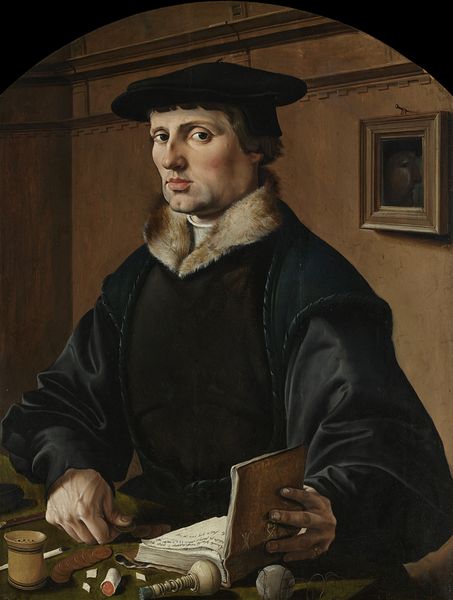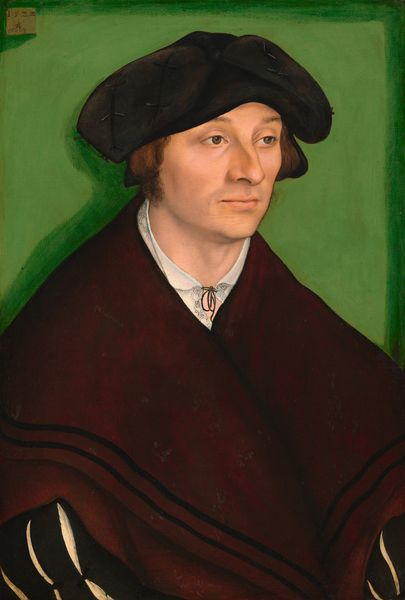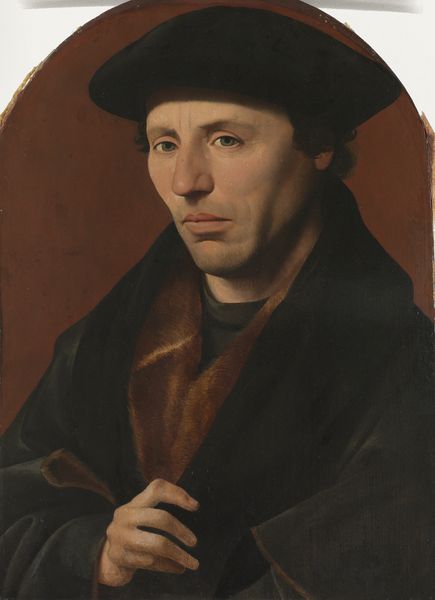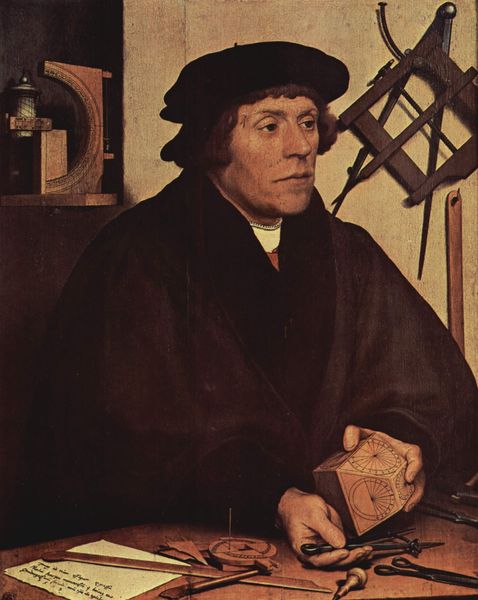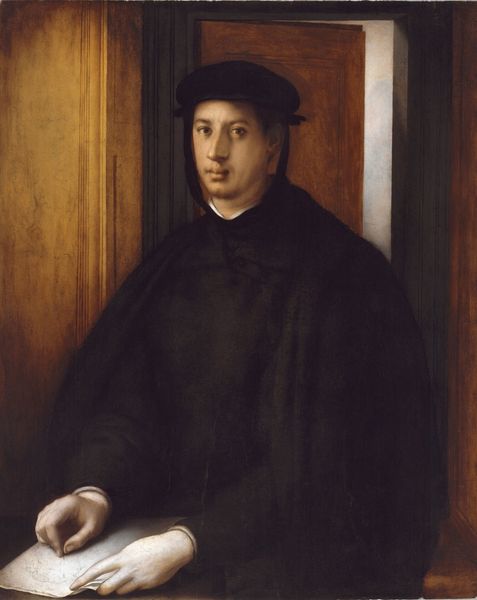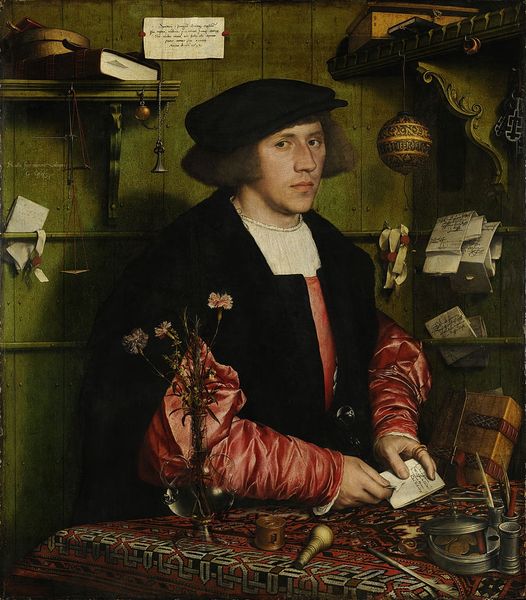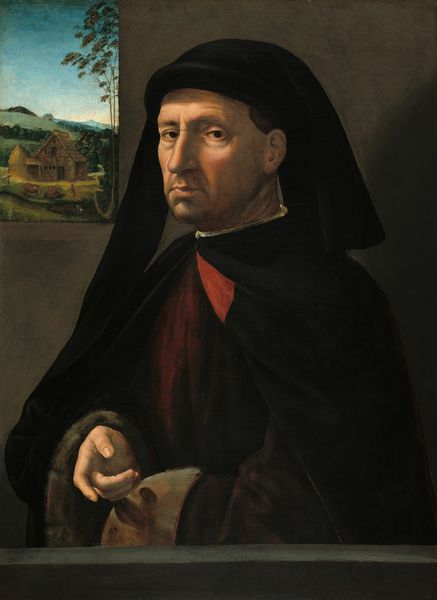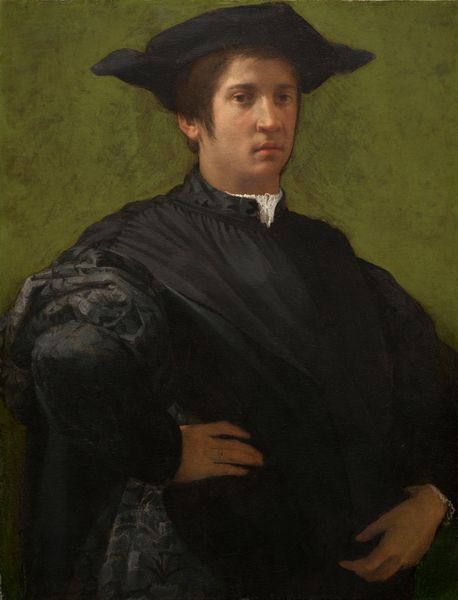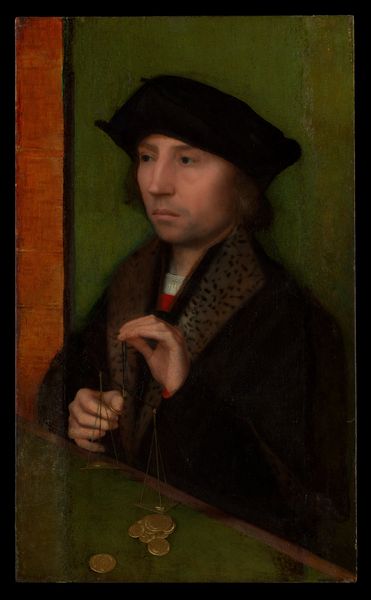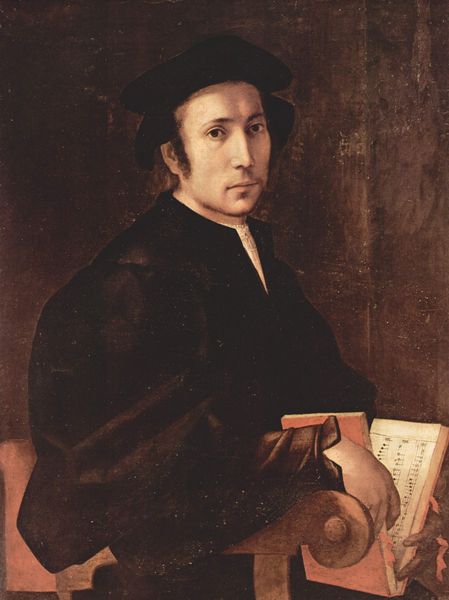
oil-paint
#
portrait
#
oil-paint
#
history-painting
#
italian-renaissance
#
realism
Copyright: Public domain
Editor: This is "Portrait of a Merchant," painted in 1530 by Mabuse, using oil paint. There's something very striking about how present he feels, even across centuries. What jumps out at you when you look at this painting? Curator: Well, it’s tempting to see just a portrait of an individual, but I think it invites us to consider the socio-economic shifts occurring in the 16th century. The Italian Renaissance wasn't just about aesthetics, it was deeply intertwined with the rise of mercantilism. Who was represented and why? Editor: So, this painting could tell us something about wealth and status back then? Curator: Absolutely. Consider the details: the fine clothing, the gold rings, and most of all, the tools of his trade. The letters and writing implements aren't merely props. They signify literacy, numeracy, and, by extension, power. Editor: That's interesting. It almost feels like he's showcasing his access to information and communication. Curator: Precisely. And who controlled information during this period? The merchant class. So how does portraying merchants shift existing ideas and hierarchies of wealth or religious figures portrayed until now? Does this contribute to empowerment of a specific social group? Editor: I never considered how radical it could be to see someone like a merchant in a painting during that time. Curator: Art doesn't exist in a vacuum. By understanding its social context, we can better appreciate how it challenged and reinforced existing power structures. Editor: I'm starting to see the importance of looking beyond just the surface. There are definitely larger social implications. Curator: Exactly, it’s about situating art within the intersectional narratives that shape history. Editor: Thank you! I will look at art with a different mindset now.
Comments
No comments
Be the first to comment and join the conversation on the ultimate creative platform.
